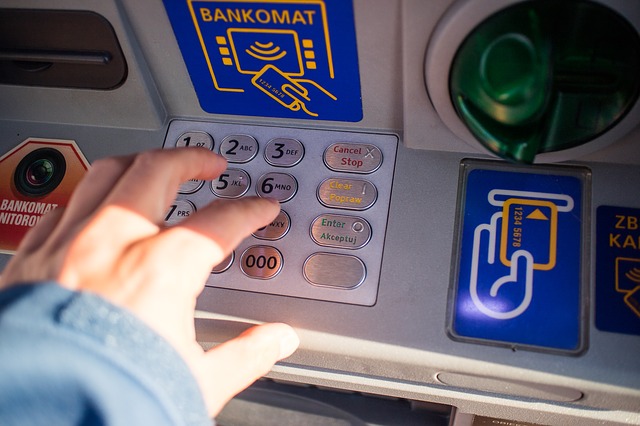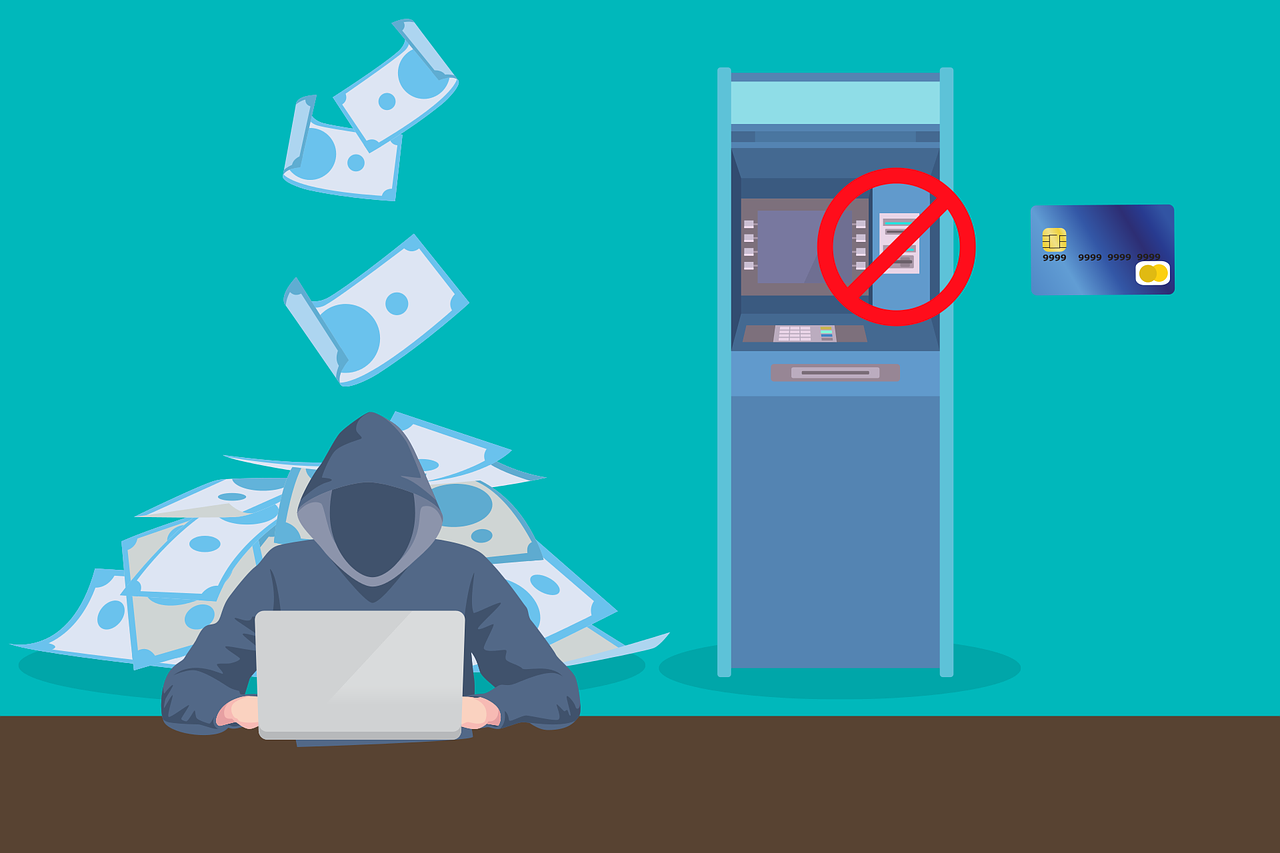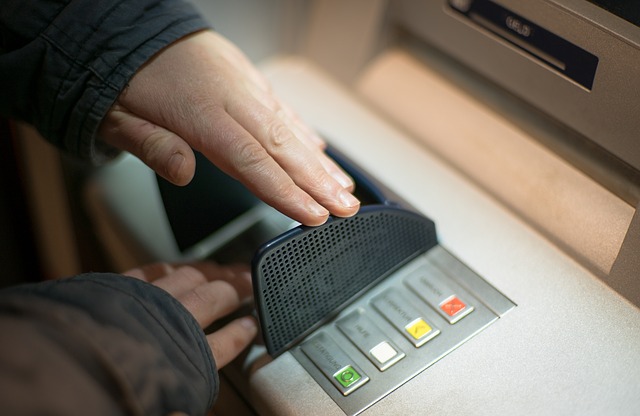Have you ever heard of the term ATM skimming? Ever fallen victim? Here is all you need to know about it.
ATM skimming has been one of the most sophisticated techniques, commonly employed by financial criminals. It is basically the theft of debit/credit card details from ATM machines. And due to the relatively low awareness, the practice remains relatively unknown to even the so-called “financial experts”.
However, over the past few years, there has been growing awareness on ATM skimming; and more people are now able to identify what a typical skimming device looks like.
Follow through this article, as we bring you credible insights into what ATM skimming is about; with emphasis on how to apply measures to protect yourself against it. Read on!
Table of Contents
What is an ATM: How does it work?
 ATM is the convenient term for “Automated Teller Machine”, which is the foremost cash dispensing engine in the world. They are typically installed in banking premises, shopping malls, recreation centers, gas stations and schools among others. In fact, it can be installed anywhere, provided there is stable power source and internet connectivity.
ATM is the convenient term for “Automated Teller Machine”, which is the foremost cash dispensing engine in the world. They are typically installed in banking premises, shopping malls, recreation centers, gas stations and schools among others. In fact, it can be installed anywhere, provided there is stable power source and internet connectivity.
Traditionally, ATMs are designed to facilitate cash withdrawals. However, with the latest development, they now serve as comprehensive financial tools, which can run just about any basic financial transaction.
READ ALSO: 7 Tips to create a Strong HackProof Password
Transactions on ATM require the use of designated debit or credit cards, colloquially known as “ATM cards”. These cards contain sensitive information (unique IDs), which, if compromised, could be catastrophic. This is the criminal idea that birth the act of ATM skimming; which is, today, the most significant threat to ATM security across the globe.
What is ATM skimming?
ATM skimming is a sophisticated form of theft that targets your debit or credit card information at ATMs (Automated Teller Machines). Here’s a breakdown of how it works:
- The Skimming Device: Criminals install a cleverly designed device, called a skimmer, on the ATM’s card reader slot. This skimmer is built to seamlessly blend in with the ATM’s design, making it difficult for unsuspecting users to detect.
- Data Capture: When you insert your card into the ATM, the skimmer discreetly reads and stores all the information on your card’s magnetic strip.
- PIN Recording: Often, a tiny, strategically hidden camera (pinhole camera) captures you entering your PIN on the ATM keypad.
- Putting it Together: With both your card details and PIN in hand, criminals can create counterfeit cards to drain your accounts or make fraudulent online transactions.
The global impact of ATM skimming is staggering. Billions of dollars are lost annually due to this crime. Despite growing awareness, the issue continues to rise. Financial institutions face significant losses, with the ATM Industry Association estimating an average cost of $1 billion per year.
By understanding ATM skimming tactics, you can be more vigilant and protect yourself from becoming a victim.
What are some ATM Skimming devices?
ATM skimming is a well-orchestrated crime requiring specialized equipment. Here’s a closer look at the two key devices used by scammers:
1. The Skimmer
- Master of Disguise: This device mimics the ATM’s card reader slot. Crafted with precision, it seamlessly overlays the real slot, making it difficult to detect any difference. Think of it as a perfectly tailored invisible suit for the real card reader.
- Data Thief: When you insert your card, the skimmer swipes it, capturing all the information encoded on the magnetic strip. This includes your card number, expiration date, and potentially even your security code (CVV).
2. The Hidden Camera
- Eye in the Sky (or Brochure Holder): This tiny camera, strategically placed, discreetly records your PIN as you enter it on the keypad. Common hiding spots include the ATM’s security mirror, brochure holder, or even fake keypads placed on top of the real one.
While skimmers and hidden cameras are the foundation, criminals are constantly evolving their techniques. Here’s a glimpse into some variations:
- Shimmers: These ultra-thin devices fit between your card and the ATM’s chip reader, stealing data from the embedded chip itself.
- Overlay Keypads: These fake keypads sit on top of the real one, recording your keystrokes as you enter your PIN.
- Bluetooth Skimmers: These high-tech skimmers use Bluetooth to wirelessly transmit stolen data to criminals nearby.
By understanding these different devices, you can become a more informed ATM user, increasing your chances of spotting a skimming attempt.
READ ALSO: A Comprehensive Guide on the Safety Precautions to Take When Using Bitcoin ATM in Turkey
How to stop an ATM card skimmer?
ATM skimming poses a significant threat to financial security worldwide. While complete prevention is impossible, here’s a two-pronged approach to minimize your risk:
1. Security Measures Taken by Banks and Institutions
- Enhanced Technology: The financial industry is constantly upgrading ATMs with improved security features. This includes:
- Chip and PIN Technology: EMV chip cards offer better protection compared to traditional magnetic stripe cards. When you use your chip card, a unique code is generated for each transaction, making it more difficult to create counterfeit cards.
- Anti-Skimming Devices: Some ATMs are equipped with special features to detect skimmers, like inserting a test card that won’t fit with a skimming device attached.
- Security Cameras: Increased CCTV camera surveillance at ATM locations deters criminals and aids in identifying perpetrators.
2. Protective Actions You Can Take
While banks work on security upgrades, your vigilance is crucial. Here’s what you can do:
- Be a Keen Observer: Before using an ATM, give it a thorough visual inspection. Look for anything loose, misaligned, or bulky around the card reader slot or keypad. Trust your gut – if something seems off, avoid using that ATM and choose another.
- Shield Your PIN: When entering your PIN, use your hand to create a barrier over the keypad, making it difficult for hidden cameras to capture your keystrokes.
- Consider Alternatives: If possible, opt for using ATMs located inside banks during regular business hours. These ATMs are generally more secure and monitored more closely.
- Embrace Contactless Payments: When available, use contactless payment methods like tap-to-pay with your card or digital wallet on your phone. This eliminates the need to insert your card or enter your PIN at the ATM.
- Monitor Your Accounts Regularly: Actively check your bank statements and online banking for any suspicious activity. Report any unauthorized transactions immediately to your bank.
By following these steps and staying informed about skimming tactics, you can significantly reduce your risk of falling victim to ATM card skimming. Remember, a little vigilance goes a long way in protecting your hard-earned money.
How to protect yourself against ATM skimming
ATM skimming is a serious threat, but there are steps you can take to protect yourself:
- Inspect the ATM: Before using any ATM, give it a close look. Check the card reader slot for anything loose, bulky, or that doesn’t fit seamlessly. Look for scratches, glue residue, or anything suspicious around the keypad or scanner.
- Fake Keypads and Cameras: Criminals may place fake keypads over the real one to capture keystrokes. Be wary of anything that feels loose or unusual on the keypad. Also, check for tiny cameras hidden in the security mirror, brochure holder, or above the ATM.
- Block the View: When entering your PIN, use your hand to create a barrier over the keypad. This will block any hidden cameras from recording your keystrokes.
- Location, Location, Location: If possible, use ATMs inside bank branches during business hours. These are generally more secure and monitored more closely. Avoid poorly lit or isolated ATMs.
- Consider Alternatives: Whenever possible, opt for contactless payment methods like tap-to-pay with your card or digital wallet on your phone. This eliminates the risk of skimming altogether.
- Stay Alert: Regularly check your bank statements and online banking activity for any suspicious transactions. Even a small unauthorized amount could be a sign of skimming.
- Report Fraud Immediately: If you notice any unauthorized transactions, contact your bank immediately to report fraud and cancel your card.
By following these tips and being vigilant, you can significantly reduce your risk of falling victim to ATM skimming.
Share your thoughts below.
INTERESTING POSTS
About the Author:
Christian Schmitz is a professional journalist and editor at SecureBlitz.com. He has a keen eye for the ever-changing cybersecurity industry and is passionate about spreading awareness of the industry's latest trends. Before joining SecureBlitz, Christian worked as a journalist for a local community newspaper in Nuremberg. Through his years of experience, Christian has developed a sharp eye for detail, an acute understanding of the cybersecurity industry, and an unwavering commitment to delivering accurate and up-to-date information.
Chandra Palan is an Indian-born content writer, currently based in Australia with her husband and two kids. She is a passionate writer and has been writing for the past decade, covering topics ranging from technology, cybersecurity, data privacy and more. She currently works as a content writer for SecureBlitz.com, covering the latest cyber threats and trends. With her in-depth knowledge of the industry, she strives to deliver accurate and helpful advice to her readers.







